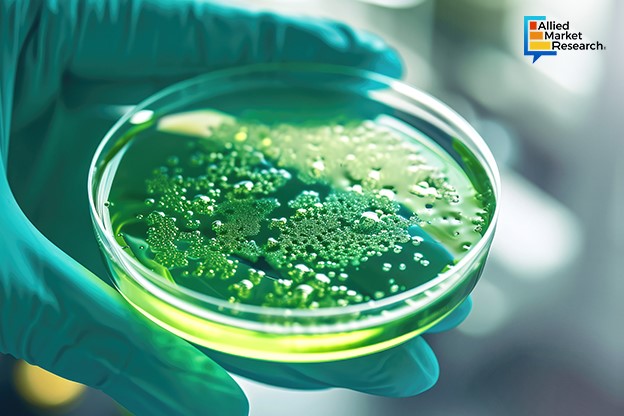Advanced Molecular Biology in Microbial Identification: Improving Precision and Efficiency

9 Aug
2024
Highlights
- Introduction
- Importance of microbial identification in the food and beverage industry
- Recent innovations in the industry
Microbial identification is the process of detecting the specific types of microorganisms in a sample, such as bacteria, viruses, fungi, or protozoa. This procedure involves analyzing morphological, biochemical, and genetic traits of microorganisms to classify and differentiate them. Techniques like microscopy, culture methods, and advanced molecular biology tools such as DNA sequencing and mass spectrometry are commonly used for microbial assessment. This process is essential in microbiology, medicine, food testing, and environmental science, assisting in disease diagnosis, research, and the implementation of targeted control measures.
Innovations in molecular biology, genomics, and other advanced techniques have transformed the microbial identification industry. Techniques such as next-generation sequencing, polymerase chain reaction (PCR), and mass spectrometry enhance the precision, speed, and efficiency of microbial identification. These advancements improve identification accuracy and enable high-throughput analysis, meeting the increasing demand for rapid and comprehensive identification solutions.
Use of microbial genetics for better food safety practices
Microbes have been used since ancient times to produce fermented foods such as dairy, bread, and beverages. In modern times, microbes are integrated to improve food quality and increase food production, but rapid multiplication of other microbial species leads to food spoilage. Advanced identification methods assist food manufacturers in monitoring microbial contamination throughout the supply chain, ensuring the continued safety of products. Techniques such as whole genome sequencing offer comprehensive insights into microbial genetics, enabling detailed tracking of contaminants. Food microbiology labs use a variety of products to rapidly confirm and differentiate microbes at the genus, species, and serotype levels. These products include biochemical reagents, identification panels, latex tests, and agglutinating sera.
However, regular microbial testing throughout the food supply chain is essential for monitoring contamination at various stages, from production to processing and distribution. By identifying sources of contamination, food manufacturers implement targeted interventions to minimize risks, thereby enhancing overall food hygiene and safety. Microbial identification supports research into the survival mechanisms of pathogens in food environments, leading to the development of improved preservation techniques and food safety practices. Understanding microbial behavior helps in designing strategies to prevent contamination and spoilage.
The NOVA algorithm's success in identifying unknown bacterial isolates
Researchers at the University of Basel have developed the latest algorithm called Novel Organism Verification and Analysis (NOVA) to assess bacterial isolates that cannot be characterized using conventional identification methods. Since 2014, the team has been collecting and analyzing patient samples with unknown bacterial isolates and has discovered over thirty new bacterial species, some of which are linked to clinically significant infections.
In this study, researchers led by Daniel Goldenberger, PhD, analyzed 61 unknown microbial pathogens found in blood or tissue samples from patients with various medical conditions. Conventional laboratory methods, such as mass spectrometry and partial bacterial genome sequencing, had been unsuccessful in characterizing these isolates.
Bruker’s MS-based microbial identification kit
In January 2021, Bruker Corporation received US FDA clearance and launched the MBT Sepsityper Kit US IVD in the US. This kit allows for the rapid detection of microorganisms from positive blood samples with the help of the MALDI Biotyper CA System. The MBT Sepsityper Kit US IVD enables the accelerated identification of various microbes from positive cultures. Microorganisms are first harvested and processed, then analyzed using the MALDI Biotyper CA System, which utilizes proteomic fingerprinting via mass spectrometry. The kit features a reference library that comprises 425 various gram-positive and gram-negative bacterial species, groups, and yeasts, including Candida auris, an emerging pathogen associated with hospital-acquired yeast infections.
The MBT Sepsityper Kit workflow usually completes the identification process in under 30 minutes from the sampling of a positive blood culture. This reduces the time-to-result (TTR) by up to 24 hours compared to traditional methods involving additional agar plate culturing and an additional 8–12 hours for biochemical identification following agar plate culturing.
The U.S. Food and Drug Administration (FDA) and bioMérieux have teamed up to enhance microbial detection tools
In February 2024, bioMérieux, a global leader in in-vitro diagnostics for 60 years, partnered with the US FDA, Regulatory Science (ORS), Offices of Applied Research and Safety Assessment (OARSA), and Center for Food Safety and Applied Nutrition (CFSAN). This collaboration aims to develop advanced tools to address food-borne pathogens, establishing the platform for numerous innovative projects to enhance detection and microbial characterization systems for pathogens that contaminate food.
To conclude, innovations in microbial identification, such as advanced molecular techniques and rapid diagnostic tools, have significantly improved the accuracy and speed of detecting microorganisms. These advancements enhance food safety by enabling precise tracking of contaminants and supporting research into pathogen survival mechanisms. However, technological innovations in these methods are expected to optimize public health protection.
For more details on investment opportunities into the microbial identification landscape, feel free to contact us!

Koyel Ghosh
Author’s Bio- Koyel Ghosh is a blogger with a strong passion and enjoys writing in miscellaneous domains, as she believes it lets her explore a wide variety of niches. She has an innate interest in creativity and enjoys experimenting with different writing styles. A writer who never stops imagining, she has been serving the corporate industry for the last five years.
How Is Pregabalin Medication Helping Patients with Neuropathic Pain and Anxiety Disorders?
Avenue: Entire Library membership of Allied Market Research Reports at your disposal
- Avenue is an innovative subscription-based online report database.
- Avail an online access to the entire library of syndicated reports on more than 2,000 niche industries and company profiles on more than 12,000 firms across 11 domains.
- A cost-effective model tailored for entrepreneurs, investors, and students & researchers at universities.
- Request customizations, suggest new reports, and avail analyst support as per your requirements.
- Get an access to the library of reports at any time from any device and anywhere.
Related Post
-
How are Submarine Cables Transforming Global Connectivity with Enhanced User Experience?
-
Endoscopy Procedures: Transformations in Techniques and Applications
-
AI-Powered Video Analytics: How the Product Actually Works for enterprises
-
Painting Robots: Transforming Precision Coating and Creative Applications
-
Innovations in Pharmacovigilance Systems Advancing Patient Safety
-
Understanding Edge Security: Keeping Data Safe Near the Source
-
Exploring the Use and Advancements of 3D Laser Scanners in Professional Applications
-
Reinforcing Industrial Controls with Smarter Tools and Training








